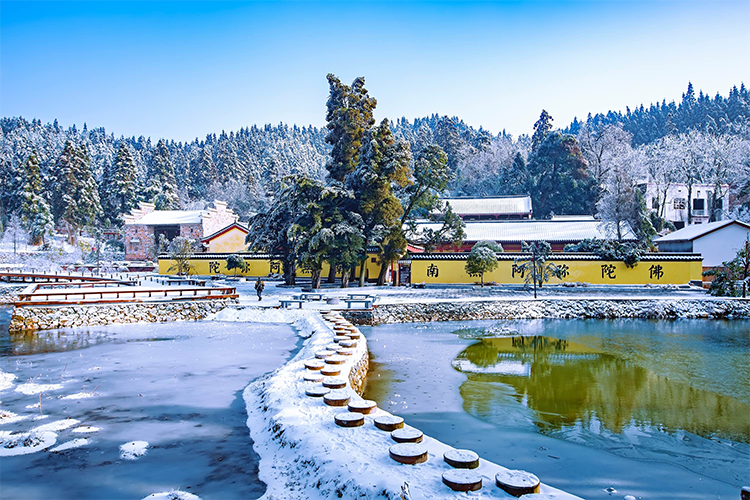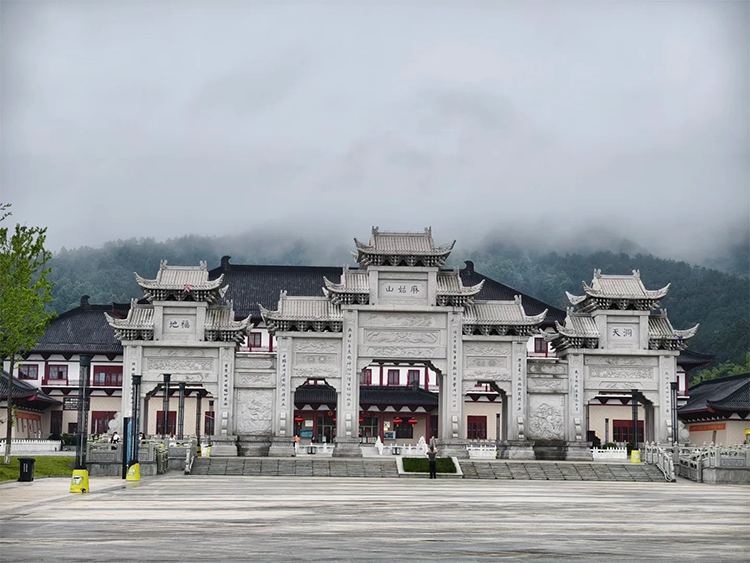Magu Mountain Danxia Landform Travel Guide: Taoist Caves, Red Cliffs & Hikes
Introduction
When morning mist wraps Furong Peak’s 1,176-meter summit like a gauze veil and Tang‑dynasty inscriptions seem to whisper beneath the slanted eaves of Xiandu Temple, Magu Mountain (Magu Shan) reveals its long-held mystery. Known in Taoist texts as the “28th Cave Heaven,” this Jiangxi sanctuary blends crimson Danxia cliffs, millennia‑old monuments, and rich ecological pockets. Legend says the fairy Magu achieved immortality here; today every visitor who climbs into the clouds can find a personal brush with the sacred.
1. A Thousand‑Year Legend of a Taoist Cave Heaven
“A mountain straddling Jiangxi and Fujian, its beauty crowns the southeast”—this ancient line captures Magu Mountain’s spirit. As an eastern offshoot of the Wuyi range, its sacred reputation appears in Taoist writings going back 1,700 years. Ge Hong mentioned the site in Bao Pu Zi as a place for spiritual cultivation; in the Tang dynasty the calligrapher Yan Zhenqing composed the inscription “Record of the Magu Immortal Altar,” cementing the “Magu offers longevity” tale. Today Xiandu Temple’s gray tiles and later Qing‑era halls host weather‑worn pillars and stelae whose carvings still echo the rhythms of the Tang courts.
2. Danxia Landforms and Natural Wonders
Nature here seems to have played with bold colors and dramatic shapes: scarlet Danxia cliffs carve the skyline into sculptures nicknamed the “Immortal Boot” and “Turtle Probing the Sea.” The Yulian (Jade Ribbon) Twin Waterfalls plunge in three tiers with an 80‑meter drop and rarely run dry; during the rainy season their roar fills the valley. The most magical phenomenon is the “cloud‑sea Buddha light”: in late spring to early summer, sunlight filtering through rising mist can surround climbers on Furong Peak with a rainbow halo. Botanists have recorded over 20 rare species including southern yew, and the forest often reveals the graceful flash of pheasant species such as the white eared‑pheasant.
3. Four Seasonal Faces of the Immortal Mountain
• Spring (March–May): azalea carpets ignite the slopes and Taoist rituals fill the valleys with bell tones.
• Midsummer (June–August): waterfalls surge and temperatures are 5–8°C cooler than the city.
• Golden Autumn (September–November): maples and Chinese tallow redden the gorges—perfect for cloud‑sea sunrises.
• Deep Winter (December–February): rime coats branches in crystalline patterns; Xiandu Temple’s snowy eaves resemble an ink‑wash painting.
Special note: on the 3rd day of the 3rd lunar month (Magu’s birthday) you can witness the traditional Pan‑Tao (peach banquet) ceremony and offerings.

4. In‑Depth Itineraries
Cultural Pilgrimage (half‑day):
East Gate → Xiandu Temple (view stelae, sample Taoist tea) → Bitao Nunnery (Ming‑era women’s Taoist site) → Lian Dan Well (alchemical site linked to Magu)
Nature Explorer (full‑day hike):
West Gate Visitor Center → Qingyun Boardwalk (Danxia viewpoint) → Yulian Twin Waterfalls → Furong Peak summit (approximately 5 hours; bring ample water)
5. Practical Travel Tips
• Transportation: Take high‑speed rail from Nanchang Changbei Airport to Nancheng Station (about 1.5 hours), then a tourist shuttle bus to the park (30 minutes).
• Tickets: Peak season (April–October) 80 CNY per person, includes Xiandu Temple admission; cableway one‑way 50 CNY (recommended for older visitors).
• Accommodation: Magu Mountain Lodge at the foot offers vegetarian Taoist meals; for higher comfort choose a hot‑spring hotel in Nancheng town.
• Special tips: mountain trails are slippery in the rainy season—wear anti‑slip shoes; to see the cloud sea, reach Furong Peak before 7:00 AM.

Conclusion
As the last slant of sunset gilds Xiandu Temple’s flying eaves, you understand why poets called this place a terrestrial Penglai. Magu Mountain will win your eyes with dramatic peaks and streams, and it will touch your heart with centuries of Taoist thought. This cave heaven, hidden in time, awaits the traveler ready to uncover its stories—on which weathered stone will you begin yours?


